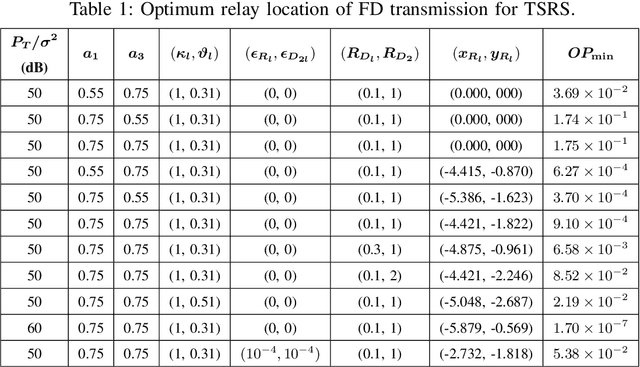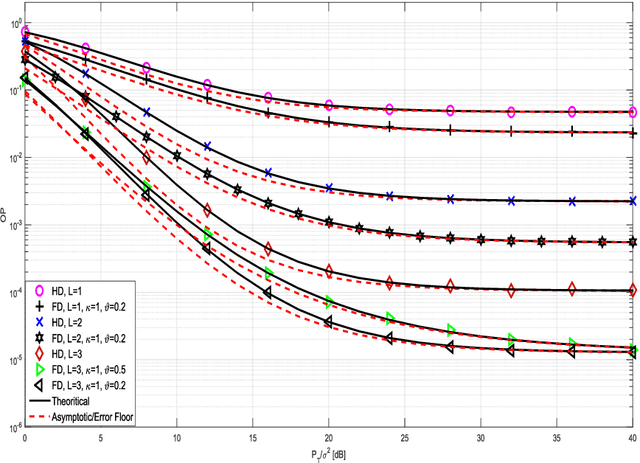Eray Güven
Multi-State Inter-Satellite Channel Models
May 12, 2023Abstract:The advancement in satellite networks (SatNets) offers vast opportunities for large-scale connectivity and flexibility. The intersection of inter-satellite communication (ISC) and the developments in rate-hungry enhanced mobile broadband (eMBB) services have resulted in potential ultra-dense deployments such as mega-constellations. The integration of inter-satellite links (ISL) with high spectrum bands requires a well-defined channel model to anticipate possible challenges and provide solutions. In this research, we address the key concerns for defining SatNets channels and establish a comprehensive node-to-node ISL channel model for the Markov state model. The model takes into consideration satellite mobility, celestial body radiation, and cumulative thermal noise. Using this model, we analyze the bit error rate, outage, and achievable capacity of various ISC cases and propose a state-based power allocation method to improve their performance.
CNN-aided Channel and Carrier Frequency Offset Estimation for HAPS-LEO Links
Jun 26, 2022



Abstract:Low Earth orbit (LEO) satellite mega-constellation networks aim to address the high connectivity demands with a projected 50,000 satellites in less than a decade. To fully utilize such a large-scale dynamic network, an air network composed of stratospheric nodes, specifically high altitude platform station (HAPS), can help significantly with a number of aspects including mobility management. HAPS-LEO network will be subject to time-varying conditions, and in this paper, we introduce an artificial intelligence (AI)-based approach for the unique channel estimation and synchronization problems. First, channel equalization and carrier frequency offset with residual Doppler effects are minimized by using the proposed convolutional neural networks based estimator. Then, the data rate is compounded by increasing spectral efficiency using non-orthogonal multiple access method. We observed that the proposed AI-empowered HAPS-LEO network provides not only a high data throughput per second but also higher service quality thanks to the agile signal reconstruction process.
Relay Selection with Imperfect SIC for FD/HD NOMA Cooperative Networks over Nakagami-$m$ Fades
Mar 23, 2021



Abstract:In this work, a non-orthogonal multiple access (NOMA) based transmission between two sources and two end-users is examined over independent non-identically distributed (i.n.i.d.) slow Nakagami-$m$ fading channels, where a single relay using decode-and-forward (DF) protocol is selected out of a set of full-duplex/half-duplex (FD/HD) multiple relays in accordance with the quality of service criterion. Two relay selection (RS) strategies, selecting a relay to maximize data rate of user 1 at selected relay and selecting a relay out of a set of relays providing service quality for user 1 to maximize data rate of user 2, are analyzed. Additionally, not only perfect successive interference cancellation (pSIC) but also imperfect SIC (ipSIC) is considered. The exact and asymptotic outage probability (OP) expressions are derived and validated via Monte Carlo simulation technique. Unlike existing works, our expressions are unique and valid for all cases such as FD and HD together with pSIC and ipSIC, i.e. expressions are not given separately but in a single compact form. Effect of each component such as pSIC, ipSIC, and self-interference (SI) for FD transmission on error floor of OP is demonstrated. Moreover, the optimum relay location is illustrated for a plenty of scenarios consisting of combination of different power allocations, data rates, pSIC/ipSIC, and total transmitted powers.
 Add to Chrome
Add to Chrome Add to Firefox
Add to Firefox Add to Edge
Add to Edge